|
Eleven Things You Might Not Know About Irving J. Gill
By Allen Hazard
May/June 2020
SOHO's celebration of Modernist architect Irving Gill's 150th birthday goes on! Although we are unable to gather to hear longtime SOHO member and historian Allen Hazard give a Terrace Talk on Irving Gill that he presented as a seminar lecture at the 2019 National Arts & Crafts Conference at the Grove Park Inn, we're presenting the following article he graciously provided.
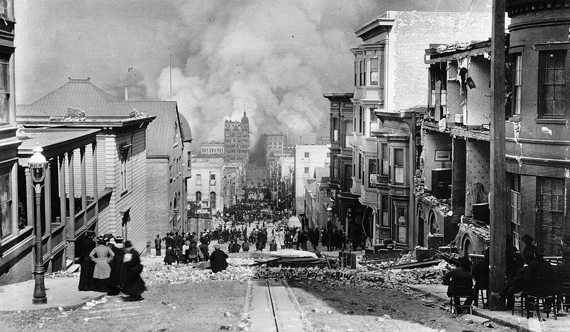 1. The 1906 San Francisco earthquake influenced Gill's construction design 1. The 1906 San Francisco earthquake influenced Gill's construction design
Irving Gill visited San Francisco following the 1906 earthquake to study architectural conditions. He stated that the buildings destroyed by the earthquake were done with "faulty construction." In 1916, Gill told Craftsman Magazine that "…we should build our houses simple, plain and substantial as a boulder," a design philosophy that many of his structures now showcase. Photo by Arnold Genthe, 1906. Courtesy Encyclopedia Britannica Online
|
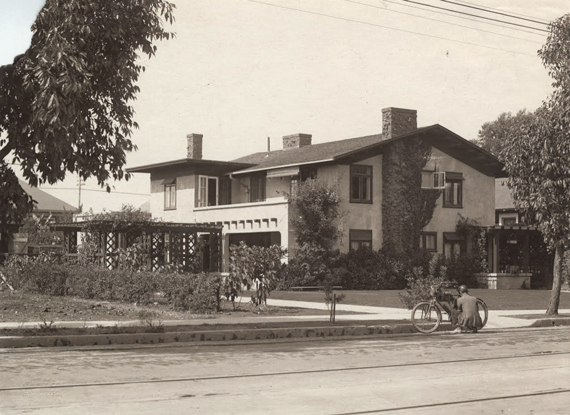 2. Plumbing killed the Hebbard & Gill 2. Plumbing killed the Hebbard & Gill
partnership
Plumbing destroyed the William Hebbard-Irving Gill partnership after eleven years. Thomas Hines, a noted author and expert on Gill, believes there are several reasons for the breakup of Hebbard and Gill in early 1907, including intellectual differences over the use of concrete as art, Progressivism, Theosophy and emerging Modernism theories.
During the construction of the Nevill Goff House, there was a dispute over a sewer drain that drew a lot of attention. Hebbard apparently didn't appreciate all the negative press and broke up the dynamic duo. Several articles detailed a plumbing dispute, including contradictory statements in a San Diego Union article from April 1907 regarding the breaking of a private sewer line. Gill's plumbing problems continued over the summer. On Oct 7, 1907, another San Diego Union article outlined the dispute between Plumbing Inspector C.A. Nichols and Gill. The disagreement went to the city council, where Edwin Rhode of Rhode Brothers Plumbing stated, "…I can't put pipes through timbers without cutting them…"', pointing to places on the plans where he said windows and other obstructions barred the way. Photo courtesy UCSB Irving Gill archives
|
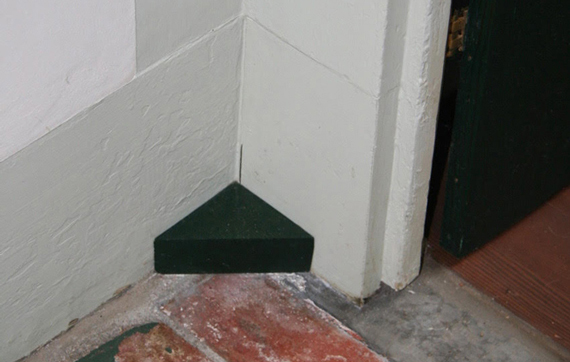 3. Gill, the great experimenter 3. Gill, the great experimenter
Gill investigated many ideas of innovative design and technologies in his work. He experimented in building methodologies with single-wall construction, slab doors, and flush molding to decrease dust accumulation. He also added labor-saving devices such as garbage disposals that dropped their refuse into a basement incinerator, a vacuum cleaner with outlets that carried dirt directly into the furnace, and an icebox that opened to the outside. Some garages even featured an automatic car washing device. Photo by Allen Hazard
|
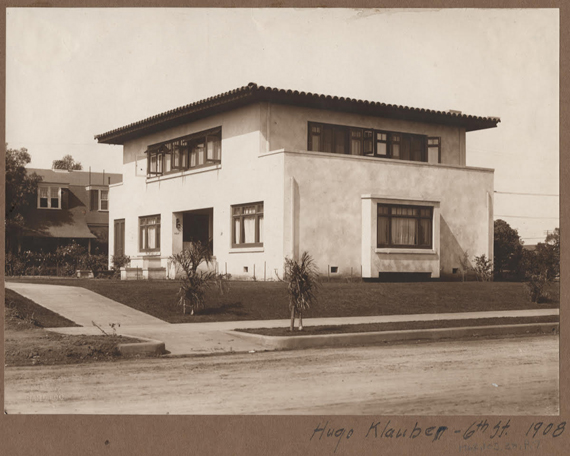 4. Alice Klauber missing mural 4. Alice Klauber missing mural
Inside the 1908 Gill-designed Hugo Klauber residence at Sixth and Maple, a large brick fireplace once sat with bookshelves on either side below the mantelshelf. Above the mantel was a "…beautiful mural landscape panel" painted by Hugo's sister and renowed artist, Miss Alice Klauber. The living room reception, hallway, and dining rooms were finished in vertical grained redwood, another Gill hallmark. Unfortunately, the Melville Klauber House (1907), and the Hugo Klauber House and Sherwood Wheaton House (1908) on Sixth Avenue have all been demolished, and the mural lost forever. Photo courtesy UCSB Irving Gill archives
|
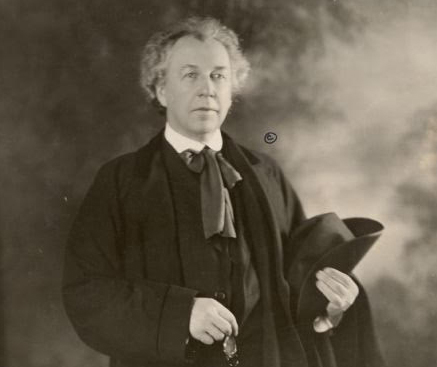 5. Why Gill came to San Diego 5. Why Gill came to San Diego
Many believe that Gill came to San Diego in 1893 for his health. Others believe Gill left Chicago after Frank Lloyd Wright, the chief draftsman at the seminal architecture firm of Adler and Sullivan, told Gill to stop dressing in a flamboyant style and wearing his hair like him. "Gill, for Christ's sake, get a haircut," Wright barked at Gill. Apparently, Gill was so upset by this confrontation that he immediately left Chicago following the design competition for the Transportation Building by Adler and Sullivan (with Wright and Gill contributions), for the Chicago World's Fair of 1893.
Another theory is Gill's mentors simply told him of greener pastures. Gill was one of many architects, including Wright, George Elmslie, and George Maher who received early training with Joseph Silsbee, who was commissioned to build a house in the San Diego area for O.S. Hubbell in 1888 (January 7, 1888), and therefore was familiar with the area. Louis Sullivan had also traveled to San Diego around 1891. So, perhaps it was a combination of Silsbee and Sullivan pointing to the beauty of the open west. Gill might also have had enough of Wright. Photo Frank Lloyd Wright, c. 1880s. Courtesy Wisconsin Historical Society
|
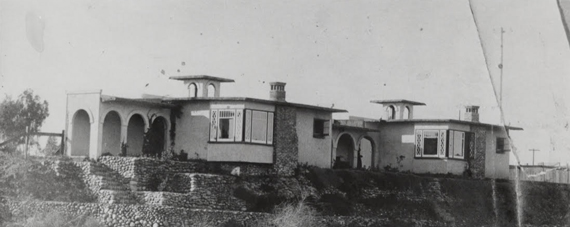 6. Gill's greatest advocate lived 6. Gill's greatest advocate lived
in Hillcrest and Mission Hills
Gill's greatest champion, Craftsman Magazine editor Eloise Roorbach, wrote more articles on Gill than any other architect, except Charles and Henry Greene. Roorbach lived for a time in one of the two "workmen's cottages" designed by Gill on Robinson Mews, and later lived on Sunset Boulevard in Mission Hills. Ester McCoy was another longtime Gill advocate, following Roorbach. Photo courtesy UCSB Irving Gill archives
|
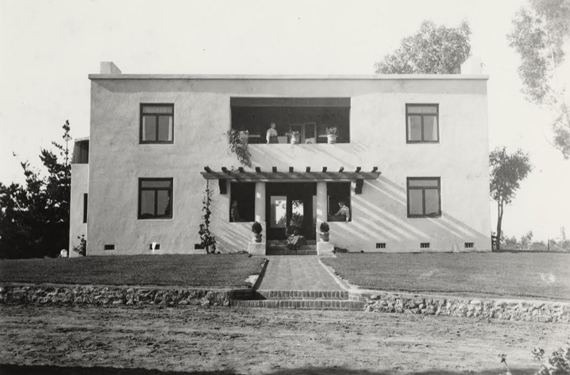 7. Gill and Mead, four houses 7. Gill and Mead, four houses
in Seven months
In 1907, predating the Steiner House in Austria by Adolf Loos, Gill and Frank Mead are believed to have designed the first Modernist home in the world, the Allen House in Bonita. Their partnership lasted only seven months, but during these months they also collaborated on the Melville Klauber House in Bankers Hill, the Wheeler Bailey House in La Jolla, and the Homer Laughlin House in South Pasadena. What a glorious seven months it was! Photo courtesy UCSB Irving Gill archives
|
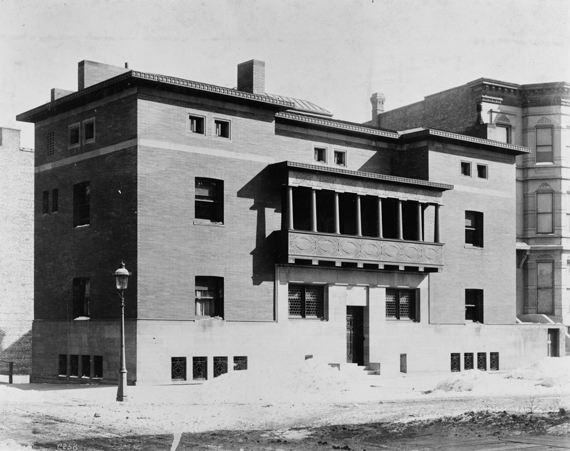 8. Chicago Charnley House influenced Gill's 1907 Allen House in Bonita 8. Chicago Charnley House influenced Gill's 1907 Allen House in Bonita
Chicago architecture writer Rachel Freundt states that the Louis Sullivan and Frank Lloyd Wright Charnley House, located in the Gold Coast neighborhood of Chicago, was also partially designed by Gill. Built in 1892, perhaps Gill drew from and used it as a starting point for the 1907 Allen House. If you strip away the third story and balcony, it looks remarkably like the Allen House. Photo courtesy Historic American Buildings Survey (HABS)
|
9. Why doesn't Mission Hills have
any Gill buildings?
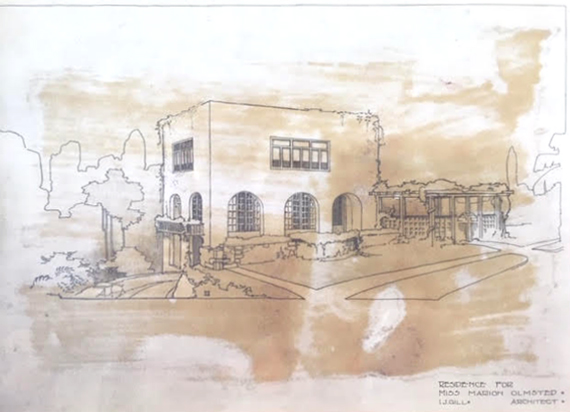 Mission Hills nearly had its own Irving Gill home when he was commissioned by Marion Olmsted in 1911 to design a stark cubistic Modern bungalow. However, the Olmsted Brothers, landscape architects for the upcoming 1915 Panama-California Exposition in Balboa Park, ended up being dismissed from the project over a planning dispute. This led to their San Diego departure, and therefore no reason to build a home in Mission Hills. A year later, Master Architect William Templeton Johnson built the Francis Parker School, now the lower school building, in its place. Photo courtesy UCSB Irving Gill archives Mission Hills nearly had its own Irving Gill home when he was commissioned by Marion Olmsted in 1911 to design a stark cubistic Modern bungalow. However, the Olmsted Brothers, landscape architects for the upcoming 1915 Panama-California Exposition in Balboa Park, ended up being dismissed from the project over a planning dispute. This led to their San Diego departure, and therefore no reason to build a home in Mission Hills. A year later, Master Architect William Templeton Johnson built the Francis Parker School, now the lower school building, in its place. Photo courtesy UCSB Irving Gill archives |
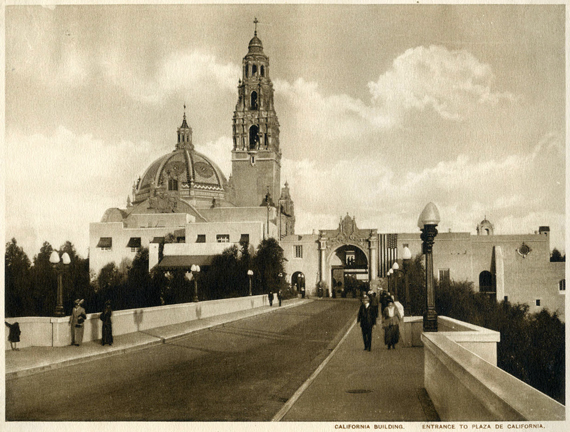 10. Why wasn't Gill Balboa Park's 1915 Expo architect? 10. Why wasn't Gill Balboa Park's 1915 Expo architect?
It was generally assumed that Gill would be chosen as the architect for the 1915 exposition, so why not? The story is that Pasadena architect Elmer Gray sounded an alarm when he wrote to his friend, Boston architect Bertram Goodhue, complaining about Gill's new "mission-style" work. Following this, Goodhue accused Gill of designing "…dangerous work" and wrote Gray that he wanted to be the architect. Gray passed this intelligence along to his former partner and noted architect Myron Hunt. Three weeks later, Goodhue was appointed, and Gill lost the spot. Postcard courtesy Coons collection
|
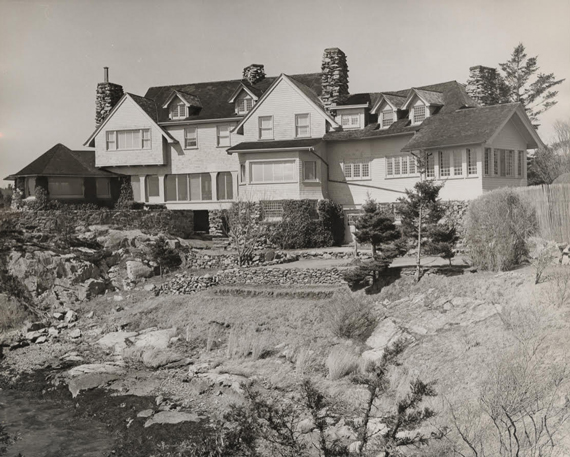 11. Just for fun, speculated 11. Just for fun, speculated
Gill connections
According to Michael Lehr, a well-known Arts and Crafts collector and historian from New York City, there was a connection between Gill and Henry Wilkinson, a noted architect and Gustav Stickley furniture designer. Lehr suggests that Gill worked with Wilkinson during his Rhode Island commissions for wealthy clients such as Ellen Mason and Albert Olmsted.
Further research on the East Coast might shed light on this fascinating theory that links these two major designers and influential professionals. Photo courtesy UCSB Irving Gill archives
|
|
2024
2023
2022
2021
2020
2019
2018
2017
2016
2015
|














